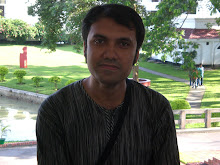http://www.bcas.net/Env.Features/Biodiversity/2004/march2004/1%20to%2015.htm
Nishorgo project launched to protect reserve forest, biodiversity
Kazi Shahnaz with Julhas Ripon
The Ministry of Environment and
Minister for Environment and Forest Shajahan Siraj inaugurated the project, titled “Nishorgo”, in the presence of diplomats, representatives of different government departments and international donor and money lending agencies, local government representatives and journalists at a ceremony in the
With the financial assistance from the United States Agency for International Development (USAID) and the Asian Development Bank (ADB), the Department of Forest and Environment will implement the project to improve the management status of the country’s protected forest areas which are under constant threat of human encroachment.
The “protected areas” include safari parks, wildlife sanctuaries, national parks and game reserves.
The Nishorgo programme is also designed to deal with the sharing of economic benefits by the stakeholders, formalisation of processes for reducing local conflicts over protected areas, installation of visitor amenities, refinement of the policy framework for management of protected areas, facilitation of eco-friendly private sector investment that can provide key services to the protected areas and support for applied research on protected areas that can improve future planning.
The minister announced that the project would be implemented through the adoption of a new management strategy, called ‘co-management’. The term ‘co-management’ means ‘a situation in which two or more social actors negotiate, define and guarantee amongst themselves a fair sharing of the management functions, entitlements and responsibilities for a given territory, area or a set of natural resources’.
The environment minister emphasised the importance of establishing partnerships between the ministry and the forest department working on its behalf with key stakeholders such as the people living around the protected areas, private businesses, other ministries, international donors, the conservation community or the indigenous people. “We will ensure effective partnership of all the local and national stakeholders in the management process under this project, where the matter of providing alternative income-generating opportunities to those presently living on forest resources will be included,” said Siraj.
The programme was also addressed by Environment Secretary Syed Tanveer Hussain,
Initially, the forest department will implement the project in five protected forest areas out of 16, which include
Thomas reminded the audience that
He said that
Environment Secretary Syed Tanveer Hussain said that the envisaged goals would not be limited to words only, rather the project would prepare the ground for the institutional improvements that can emerge from this partnership process of the co-management system.
“The threats to protected areas come from various sources and many types of people. We recognise that we must build partnerships to address the threats, and that we must take advantage of the best in technology to achieve our goals through capacity building of the departments concerned,” Hussain added.
Source: Weekly

No comments:
Post a Comment